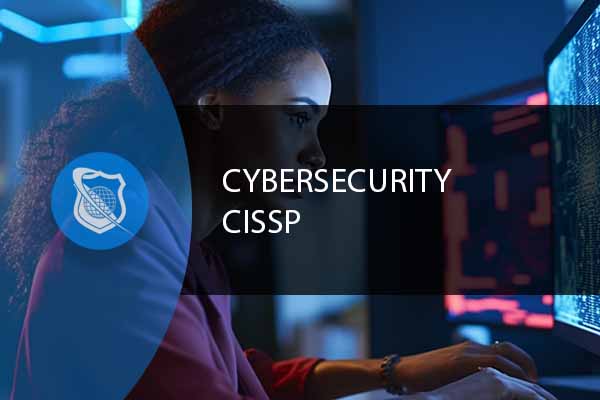What Is CISSP?
The Certified Information Systems Security Professional (CISSP) is a globally recognized certification in the field of information security, offered by the International Information System Security Certification Consortium, also known as (ISC)². It validates an individual’s expertise and skills in designing, implementing, and managing a best-in-class cybersecurity program. The CISSP certification is aimed at experienced security practitioners, managers, and executives interested in proving their knowledge across a wide array of security practices and principles.
CISSP Associated Exams:
- Certification Body: (ISC)²
- Exam Format: Multiple choice and advanced innovative questions
- Exam Duration: 3 hours
- Number of Questions: 100-150
- Eligibility Criteria: Five years of cumulative, paid work experience in two or more of the eight domains of the CISSP CBK
- Validity: 3 years, with continuing education required for renewal
CISSP Exam Costs:
The cost to take the CISSP exam is approximately USD 749, though prices may vary slightly by region.
CISSP Exam Objectives:
- Security and Risk Management
- Asset Security
- Security Architecture and Engineering
- Communication and Network Security
- Identity and Access Management (IAM)
- Security Assessment and Testing
- Security Operations
- Software Development Security
Certified Information Systems Security Professional
CISSP is the perfect credential for those with advanced technical and managerial skills, experience, and credibility to design, implement, and manage an information security program that can protect organizations from sophisticated attacks.
Frequently Asked Questions Related to CISSP
Who should obtain the CISSP certification?
Individuals seeking to validate their comprehensive knowledge and expertise in information security, including security practitioners, managers, and executives.
How long does it take to prepare for the CISSP exam?
Preparation time varies by individual, but typically ranges from 3 to 6 months, depending on prior experience and knowledge.
Can I take the CISSP exam without experience?
You can take the exam without the required experience, but you will only become an Associate of (ISC)². You must gain the required experience within six years to obtain the CISSP certification.
What is the passing score for the CISSP exam?
The passing score for the CISSP exam is 700 out of 1000 points.
How do I maintain my CISSP certification?
To maintain the certification, you must earn and submit a minimum of 40 Continuing Professional Education (CPE) credits each year and pay an annual maintenance fee.
Key Term Knowledge Base: Key Terms Related to CISSP
The Certified Information Systems Security Professional (CISSP) is a globally recognized certification in the field of information security, granted by the International Information System Security Certification Consortium, also known as (ISC)². This certification confirms an individual’s expertise and skills in designing, implementing, and managing a best-in-class cybersecurity program. Understanding the key terms related to CISSP is crucial for professionals aiming to excel in the information security domain, as it encompasses a broad range of topics that ensure a comprehensive understanding of security concepts, practices, and technologies. Below is a list of key terms that are fundamental for anyone studying for the CISSP exam or working in the information security field.
| Term | Definition |
|---|---|
| Access Control | Mechanisms or policies that restrict access to resources to only those users who are authorized to have access. |
| Asset Security | Protecting physical and digital assets of an organization from cybersecurity threats. |
| Business Continuity Planning (BCP) | The process involved in creating a system of prevention and recovery from potential threats to a company. |
| Cryptography | The practice and study of techniques for secure communication in the presence of third parties called adversaries. |
| Disaster Recovery (DR) | Strategies and processes to recover and protect a business IT infrastructure in the event of a disaster. |
| Information Security Governance | The framework that ensures the security strategies are aligned with the business objectives and consistent with regulations. |
| Incident Response | The approach taken by an organization to prepare for, detect, respond to, and recover from network security incidents. |
| Risk Management | The process of identifying, assessing, and controlling threats to an organization’s capital and earnings. |
| Security Architecture and Design | The structure and behavior of a system that ensures it operates securely. |
| Security Operations | The day-to-day processes and monitoring practices to detect, analyze, and respond to cybersecurity incidents. |
| Software Development Security | Practices and controls to ensure software is developed with security in mind, protecting the integrity, confidentiality, and availability of data. |
| Identity and Access Management (IAM) | Frameworks and processes to manage electronic identities including the policies for how identities are used to access resources. |
| Intrusion Detection System (IDS) | A device or software application that monitors a network or systems for malicious activity or policy violations. |
| Public Key Infrastructure (PKI) | A set of roles, policies, and procedures needed to create, manage, distribute, use, store, and revoke digital certificates and manage public-key encryption. |
| Security Assessment and Testing | The evaluation of the security of a computer system or network by simulating an attack from malicious outsiders (penetration testing) and insiders (security audit). |
| Security Information and Event Management (SIEM) | Software solutions that aggregate, analyze, and report on security log data from across a corporate infrastructure. |
| Threat Intelligence | Evidence-based knowledge, including context, mechanisms, indicators, implications, and actionable advice, about an existing or emerging menace or hazard to assets. |
| Vulnerability Assessment | The process of identifying, quantifying, and prioritizing (or ranking) the vulnerabilities in a system. |
| Zero Trust Security Model | A security concept centered on the belief that organizations should not automatically trust anything inside or outside its perimeters and instead must verify anything and everything trying to connect to its systems before granting access. |
| Data Encryption | The method of converting plaintext data into a coded form to prevent unauthorized access during transmission or storage. |
These terms provide a foundational vocabulary for CISSP candidates and professionals working in the field of information security, enabling them to effectively communicate concepts and strategies.

















